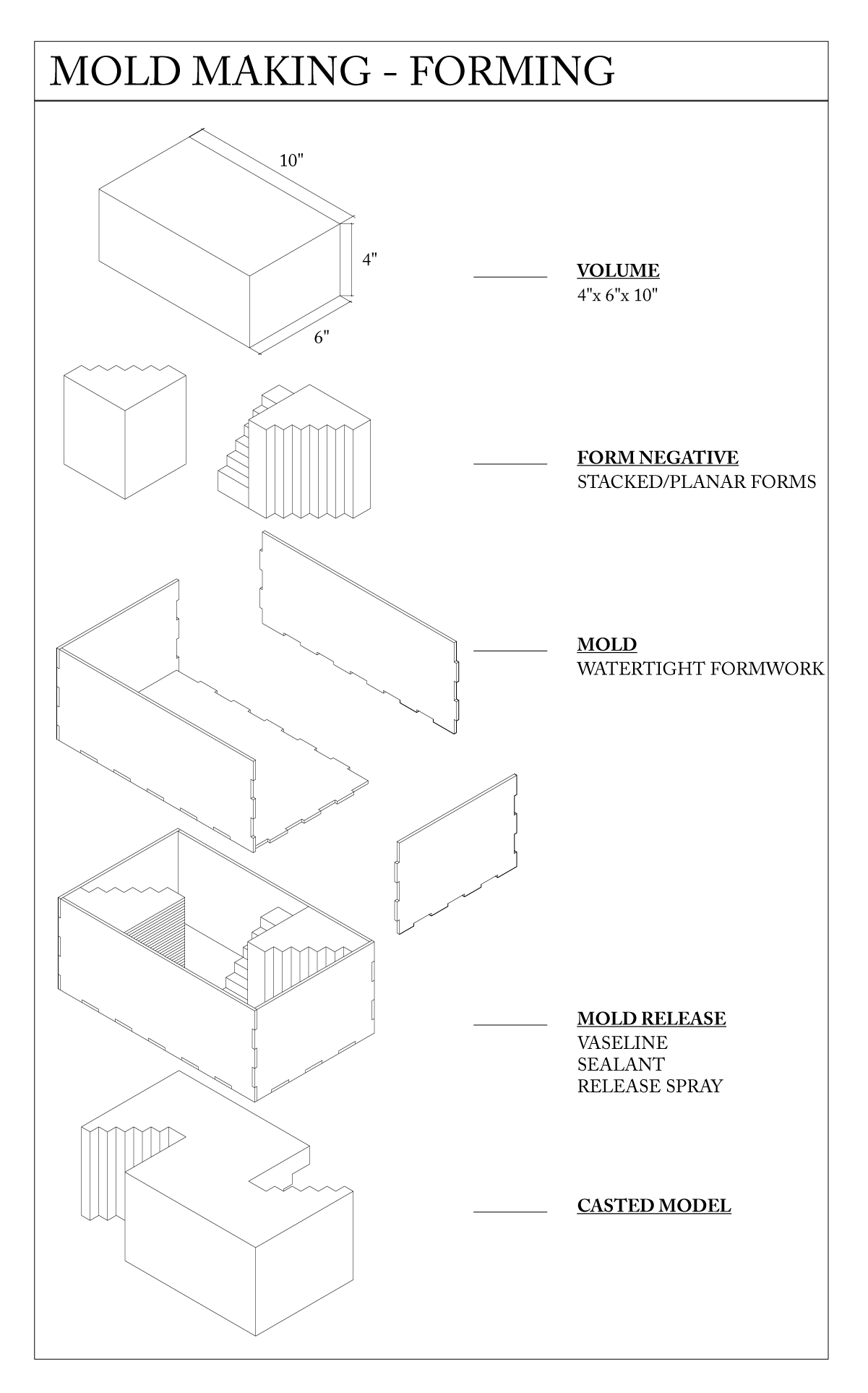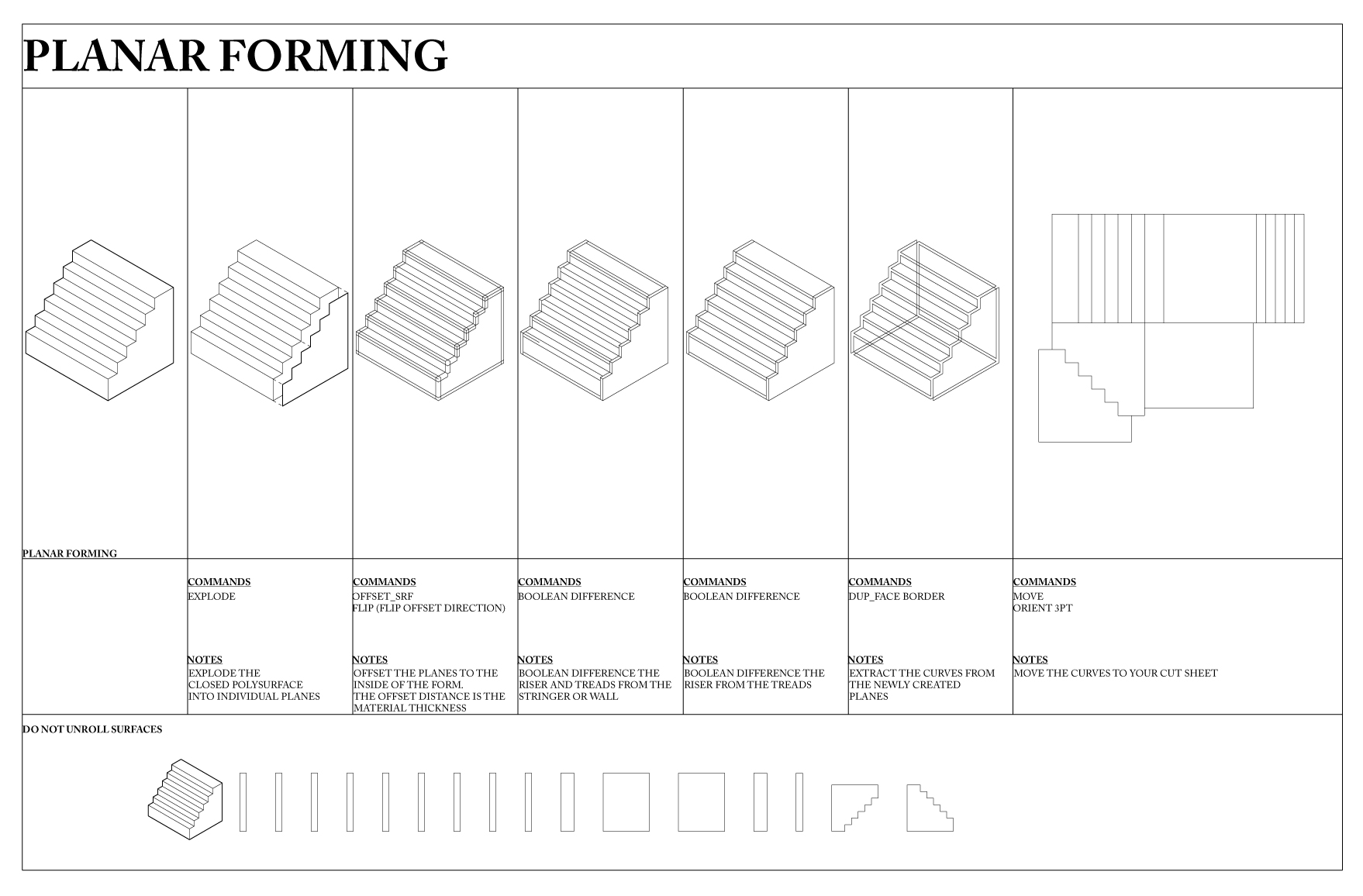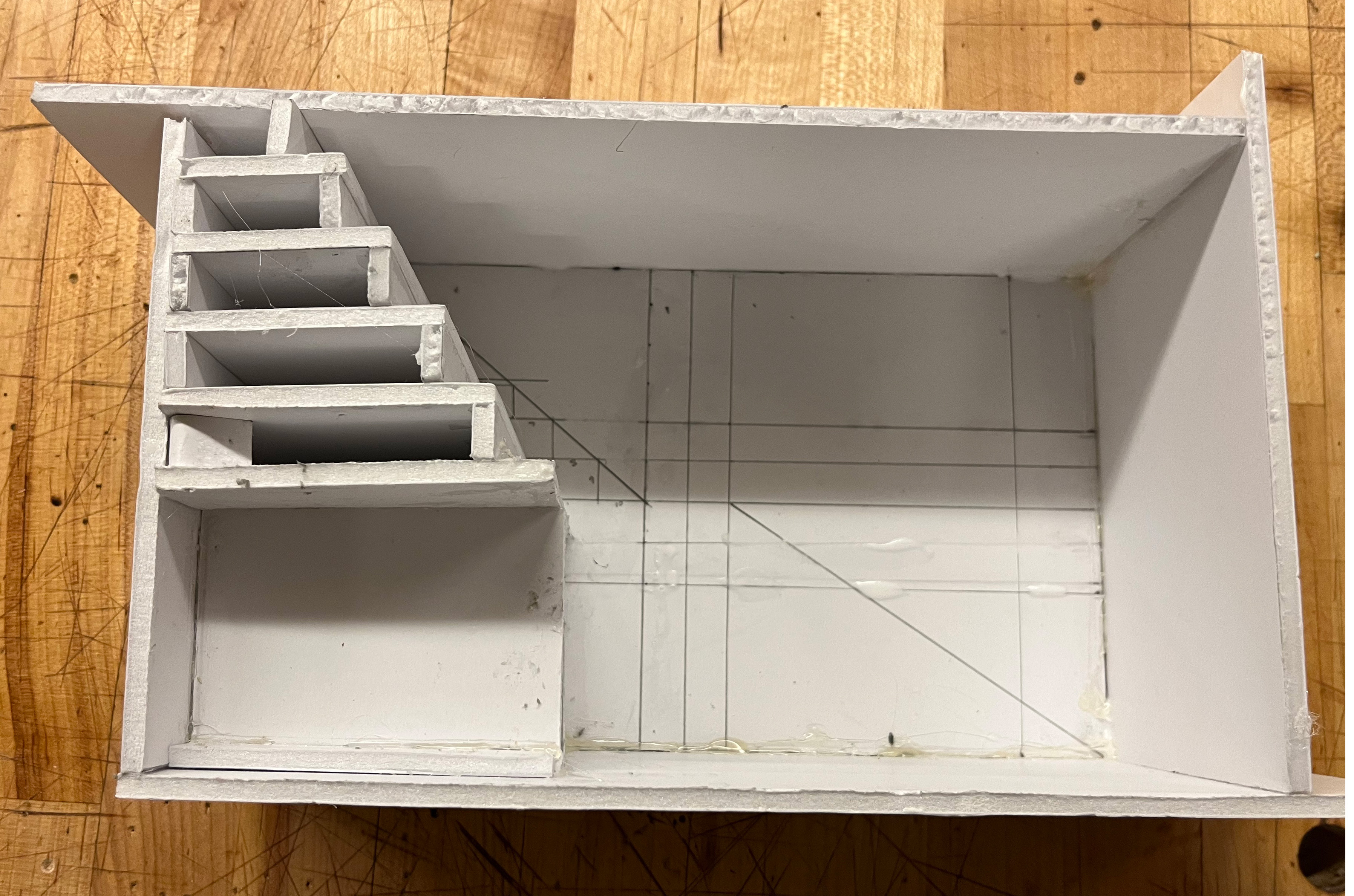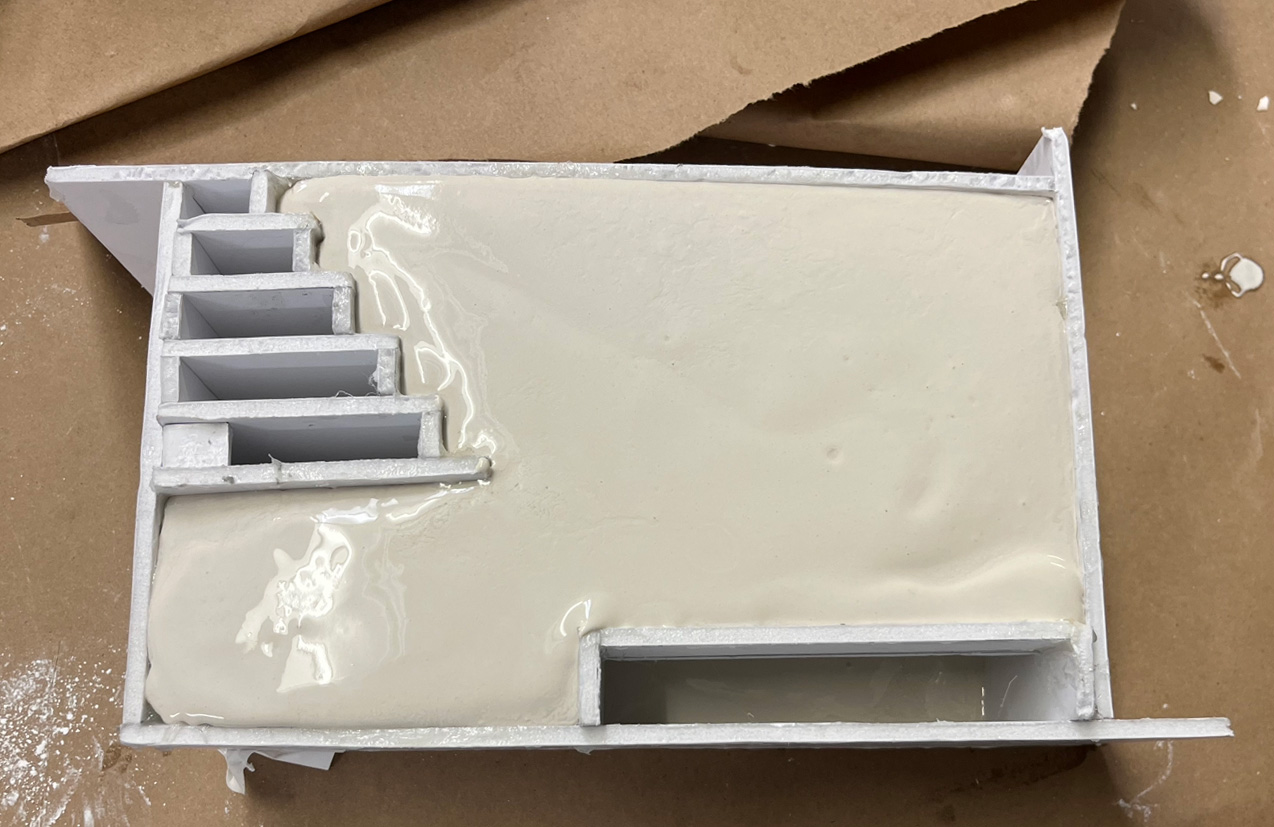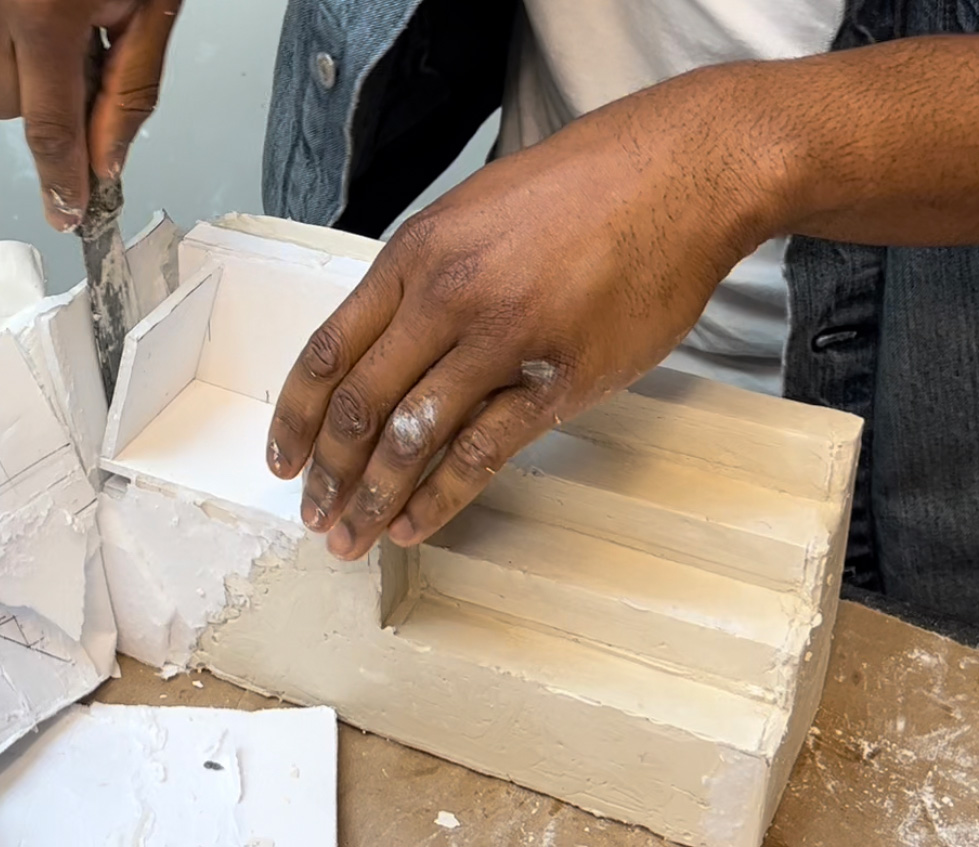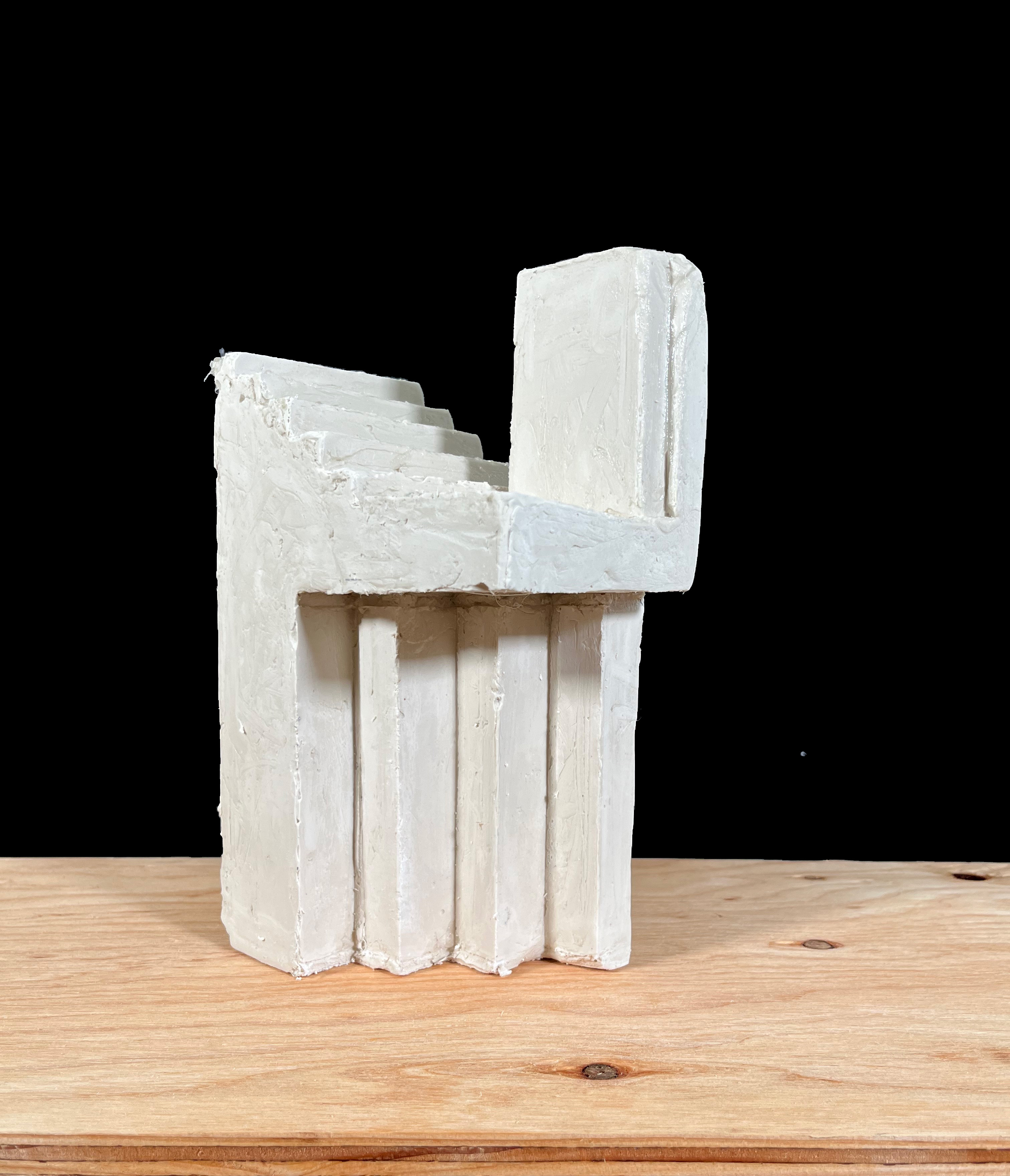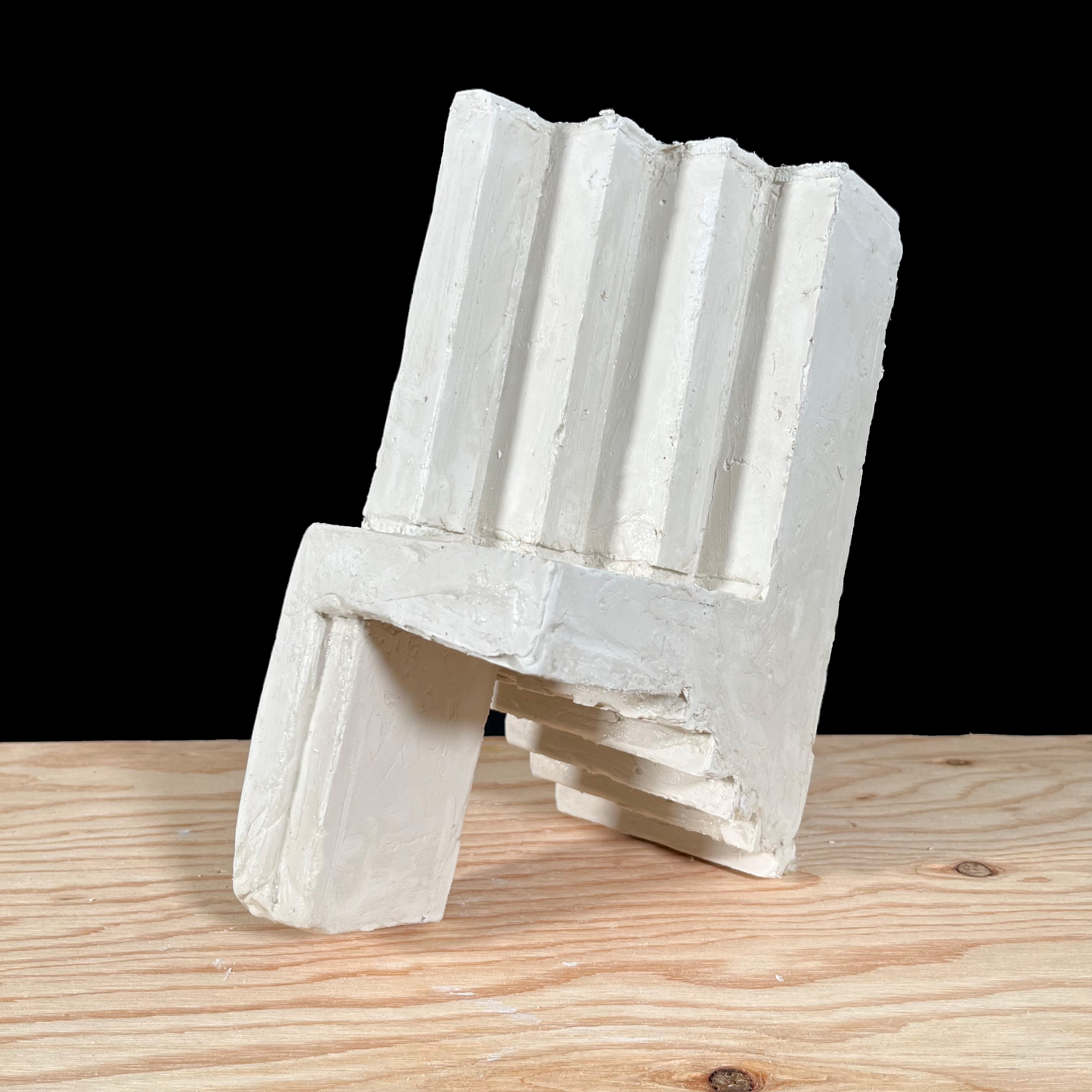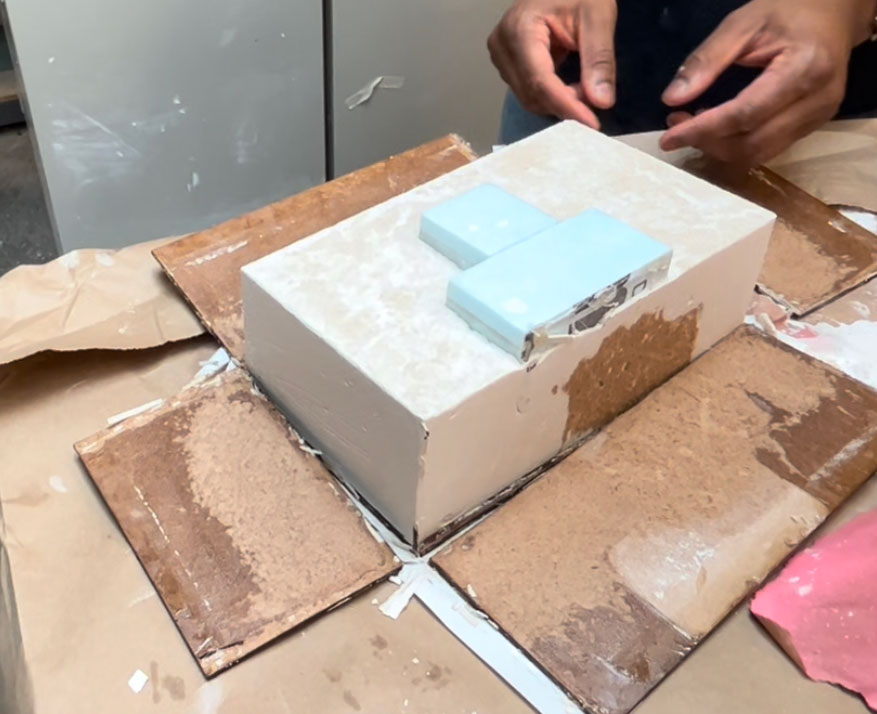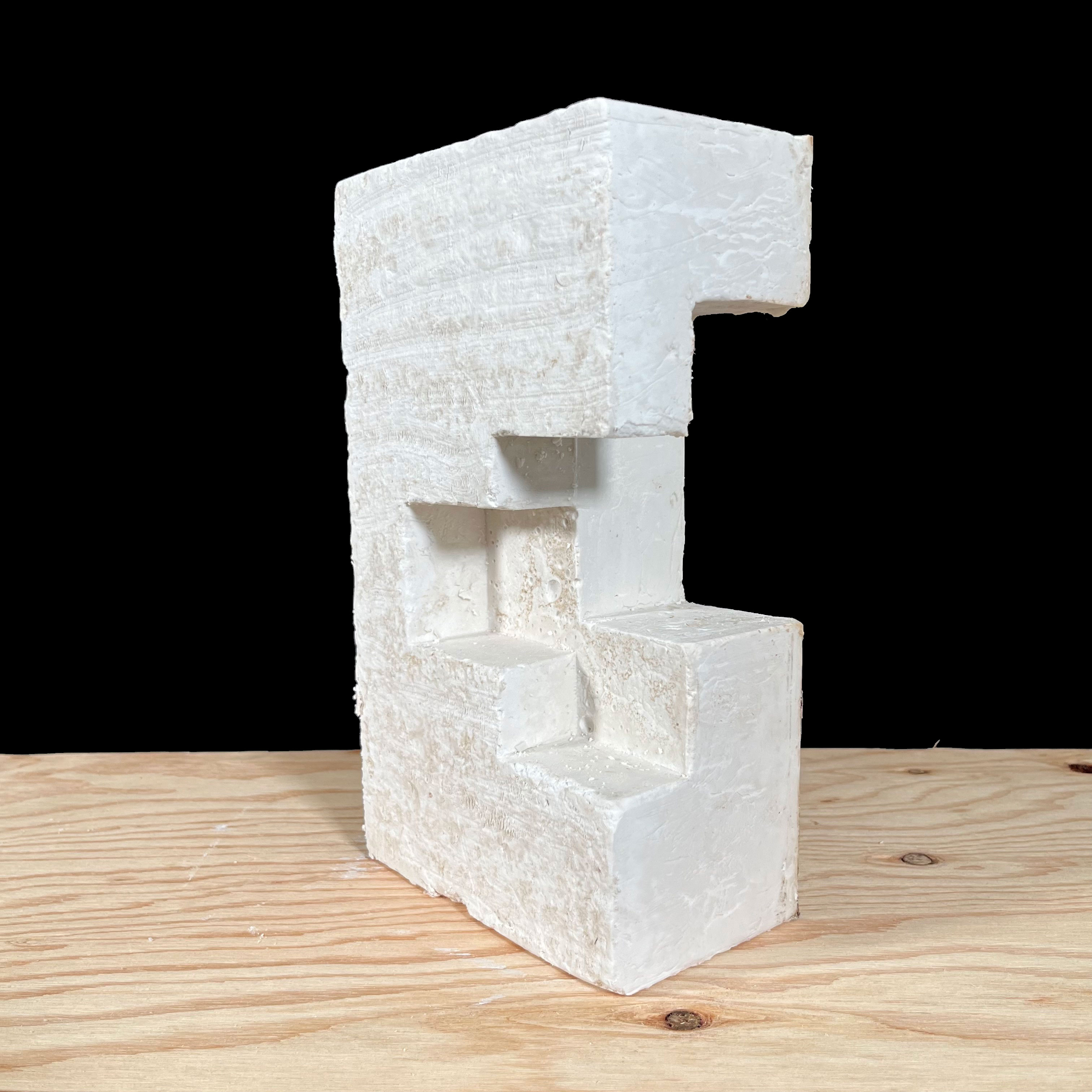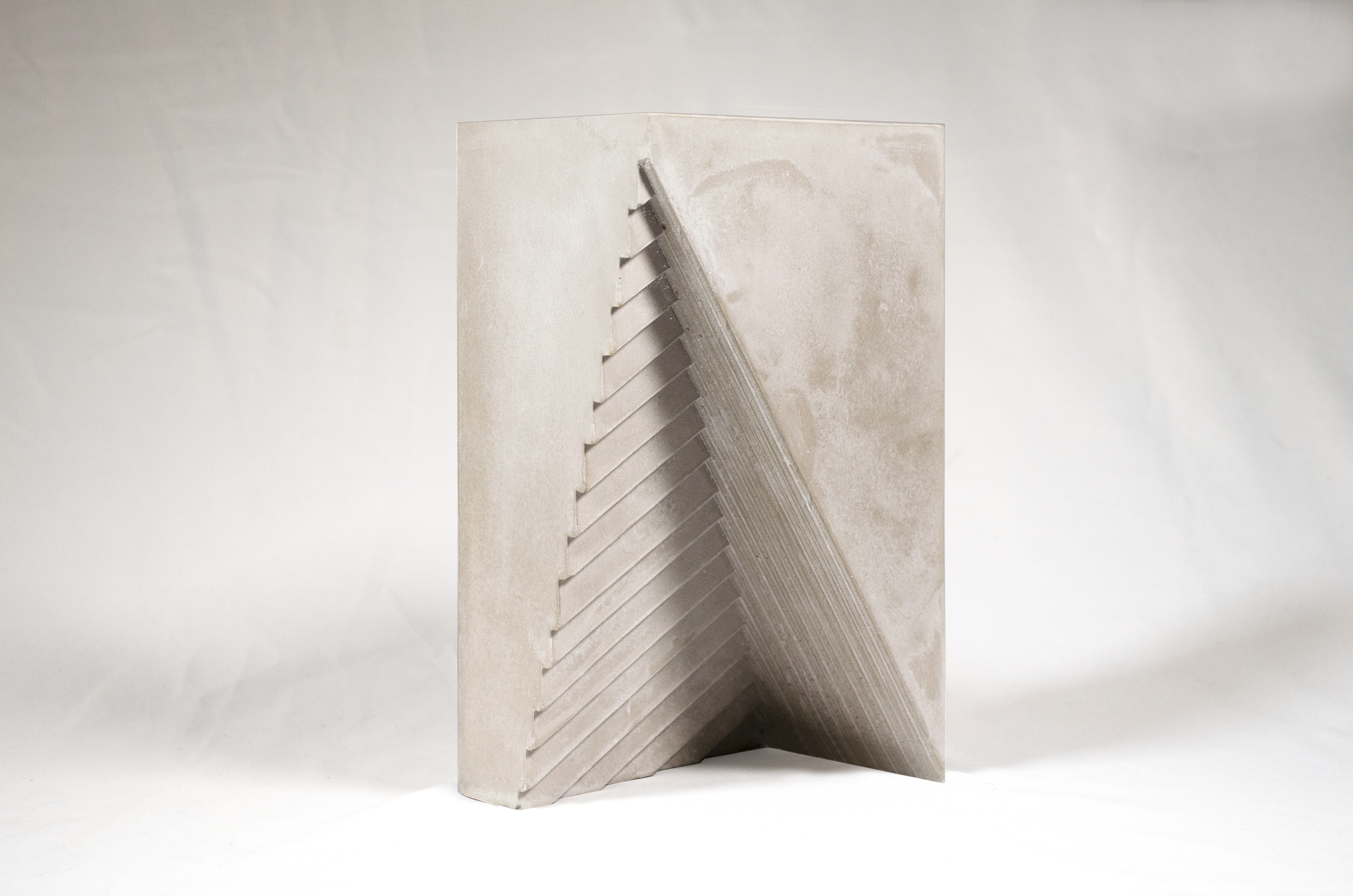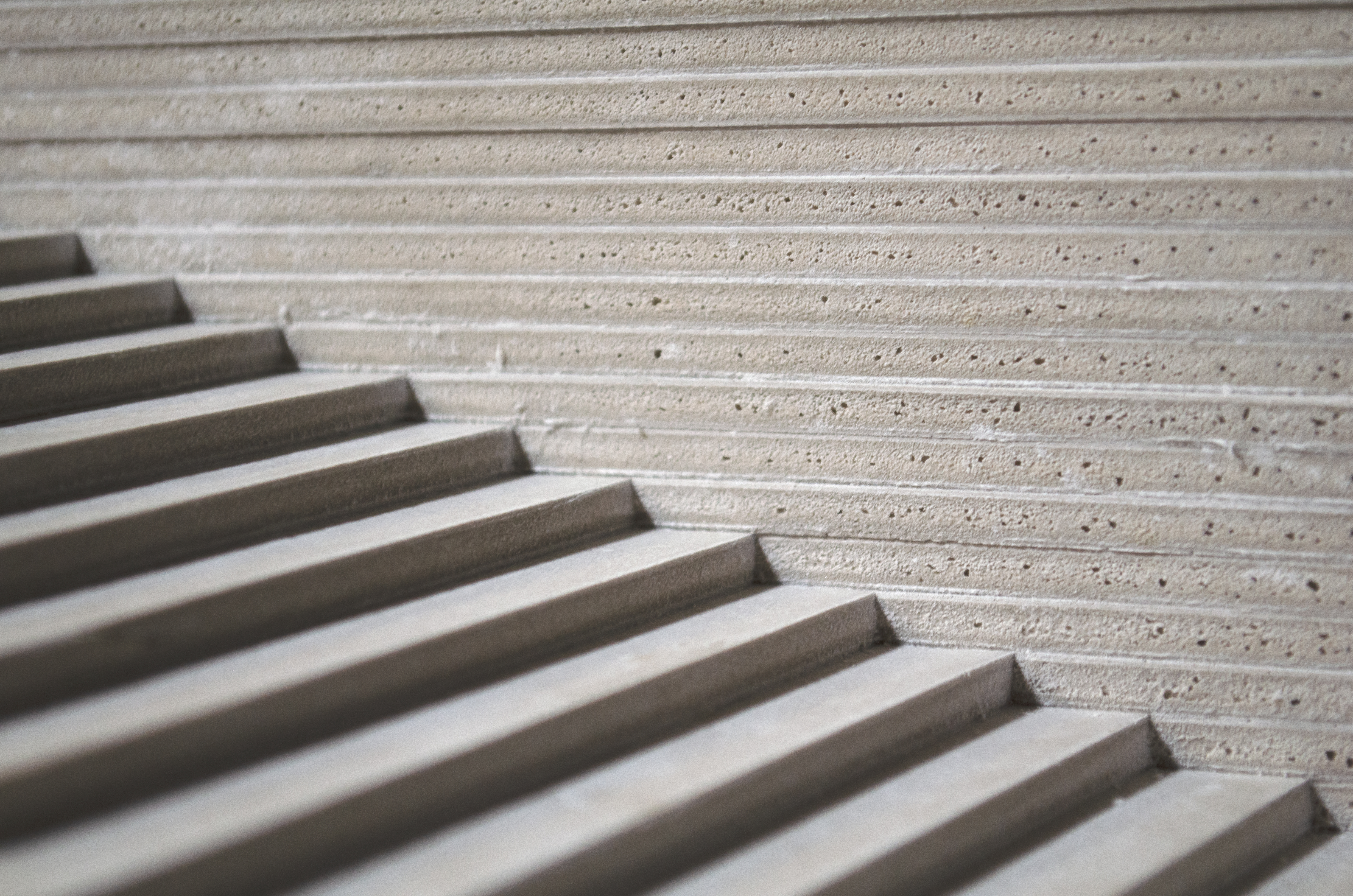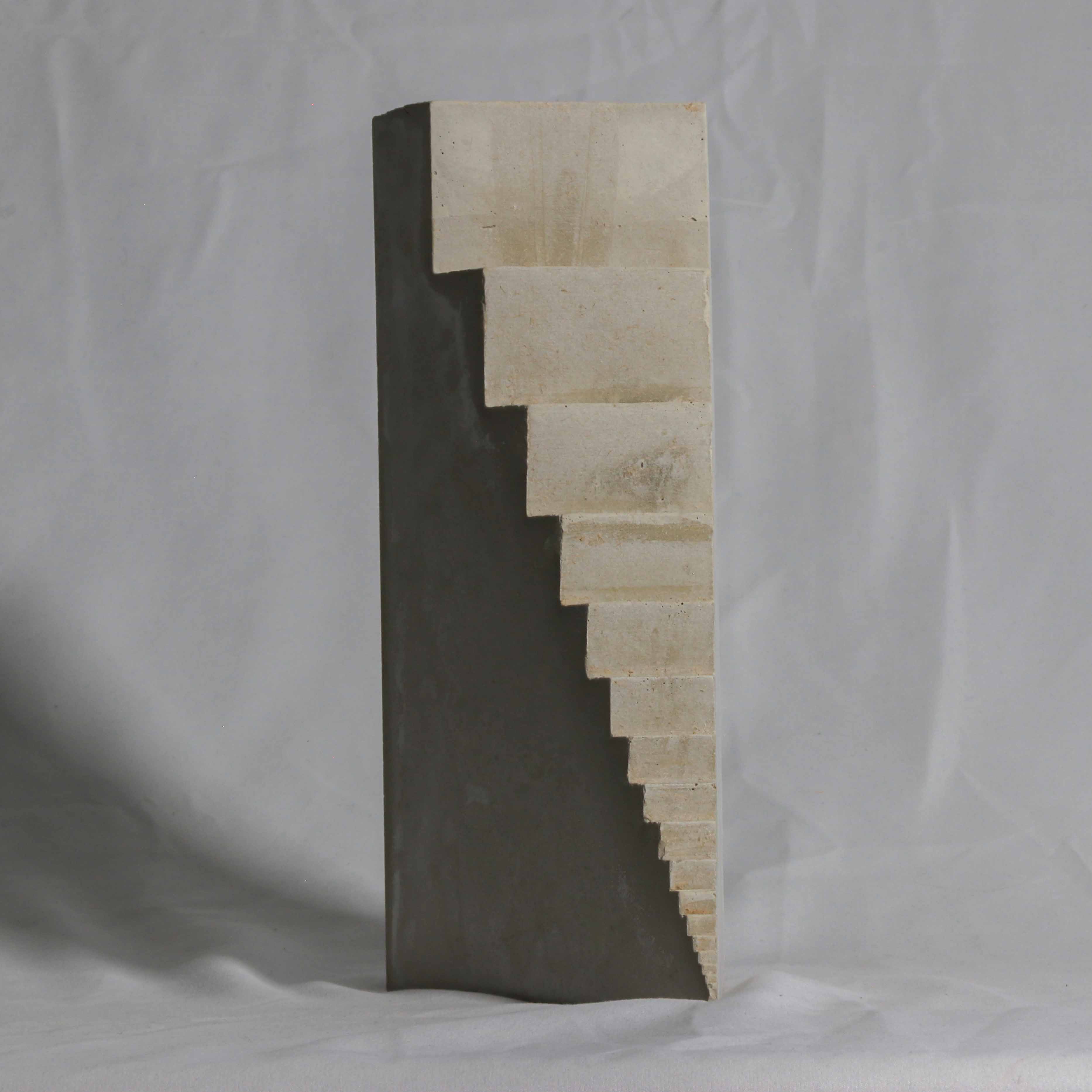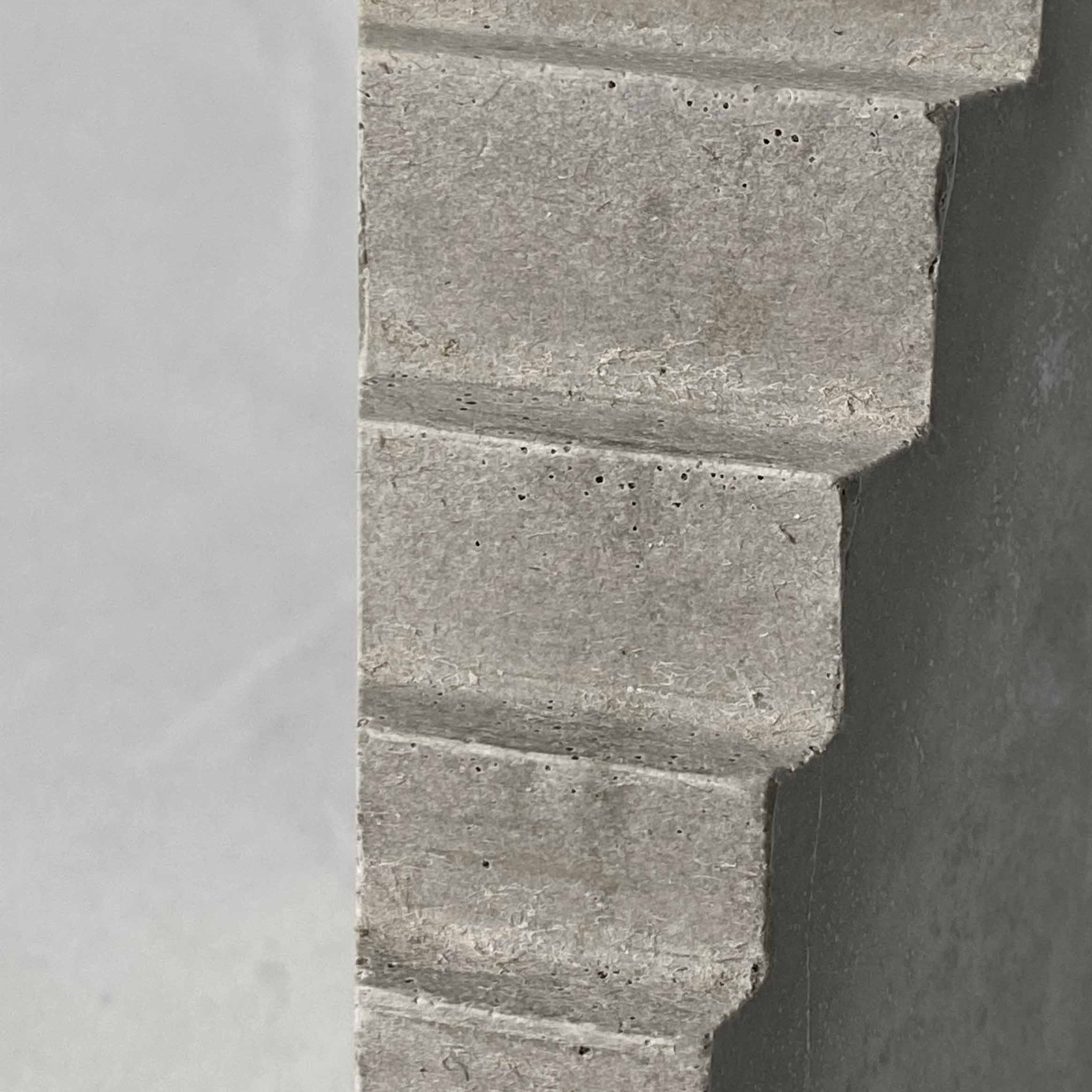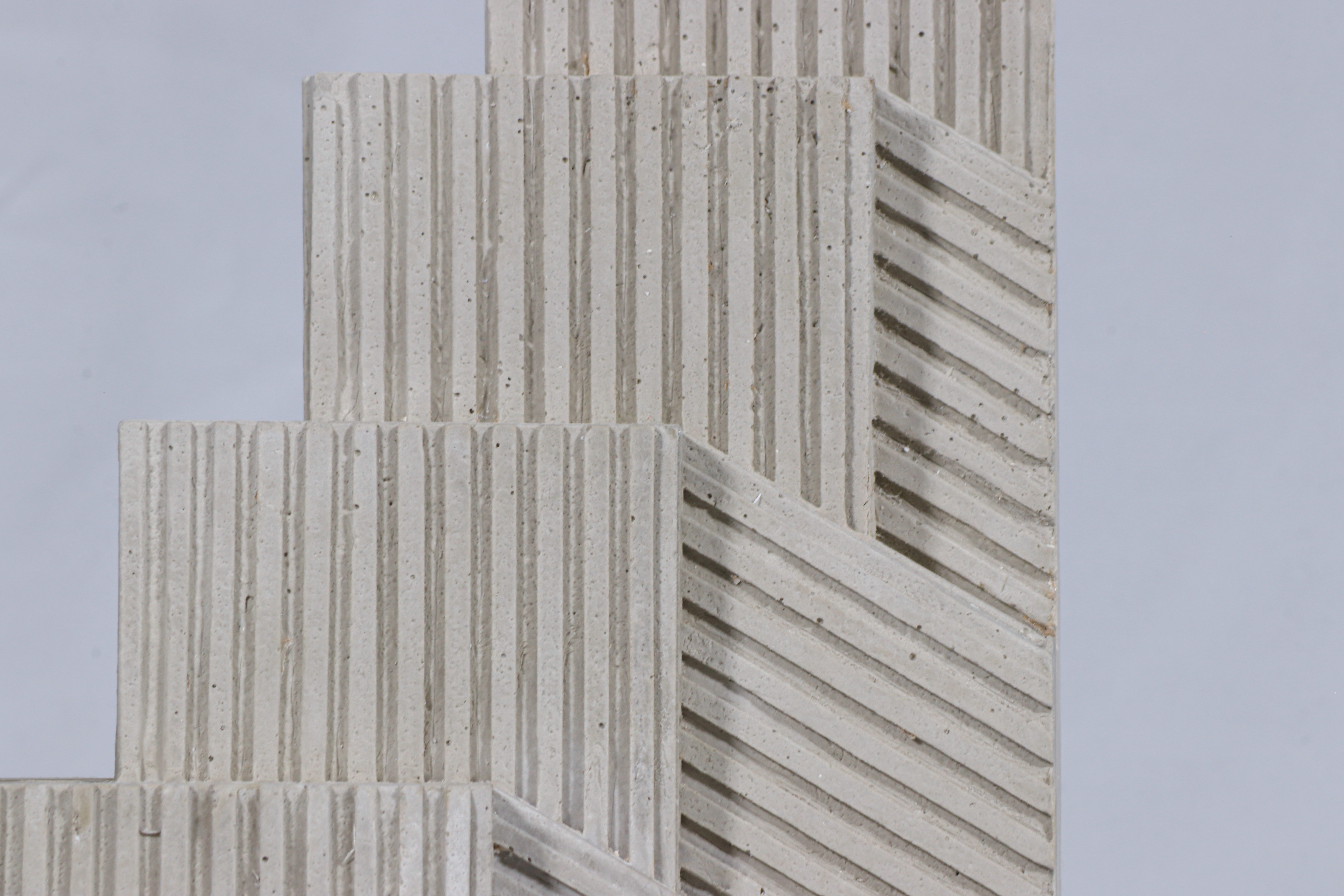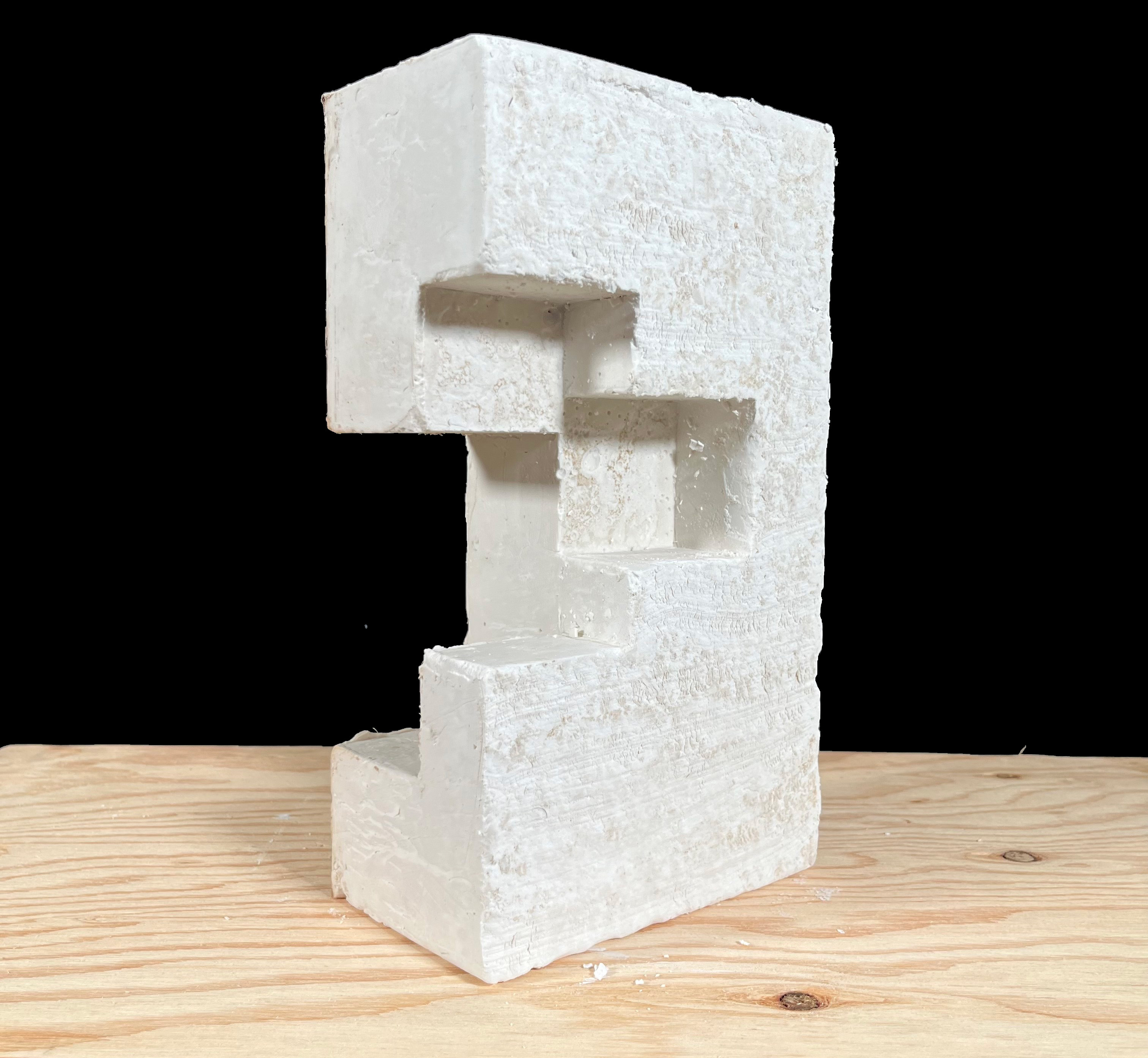
Exercise 1: Design a stair to there and a stair to nowhere.
This is an exercise that is, in part, concerned with the relationship between different modes of representation.
What is discovered/argued for in one mode of representation might be complimentary yet different than what is discovered/argued for in another.
The two modes of representation required in this exercise provide occasions to explore different sets of questions that are fundamental to the discipline of architecture.
The 2D axonometric drawing, for instance, (which could be drawn by hand or in Rhino/CAD in two dimensions,
as opposed to modeled in three dimensions) affords the opportunity to be challenged by and revel in the spatial
and formal ambiguities that come with the limited information provided by the two-dimensional representation of a three-dimensional object.
Meanwhile, the plaster cast model is somewhat less capable of being elusive formally given the facts of its physicality,
but prompts one to consider aspects of the object such as its weight, its possible orientations, and its intrinsic solid/void relationship(s).
The plaster cast model also provides a way into considering part-to-whole relationships, to consider it as a kind of construct, defined by decisions made around the design and assembly of the formwork.
In this case, it is no longer, by default, an abstract mass (as it might remain in the 2D line-drawing),
but rather uses materiality and modes of formwork-assembly as a way to demonstrate ideas about its status as a work of architecture.
